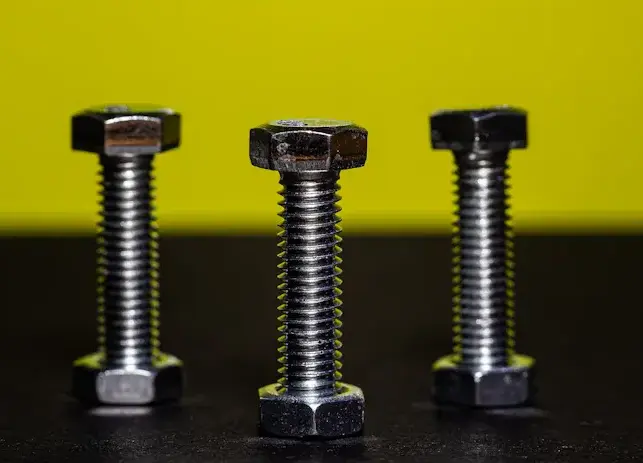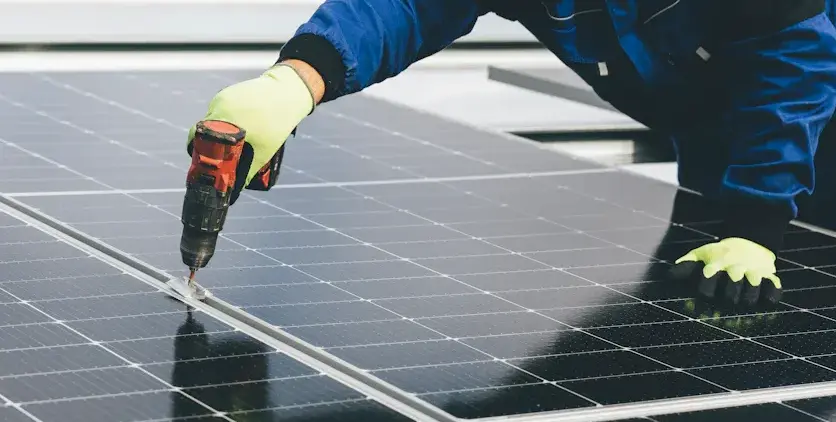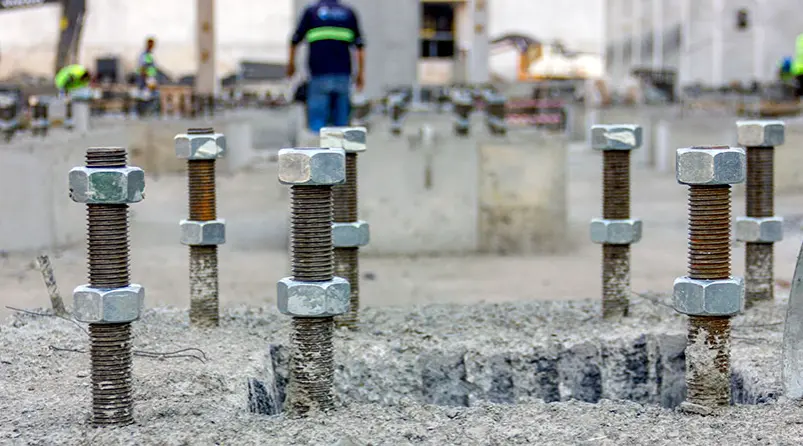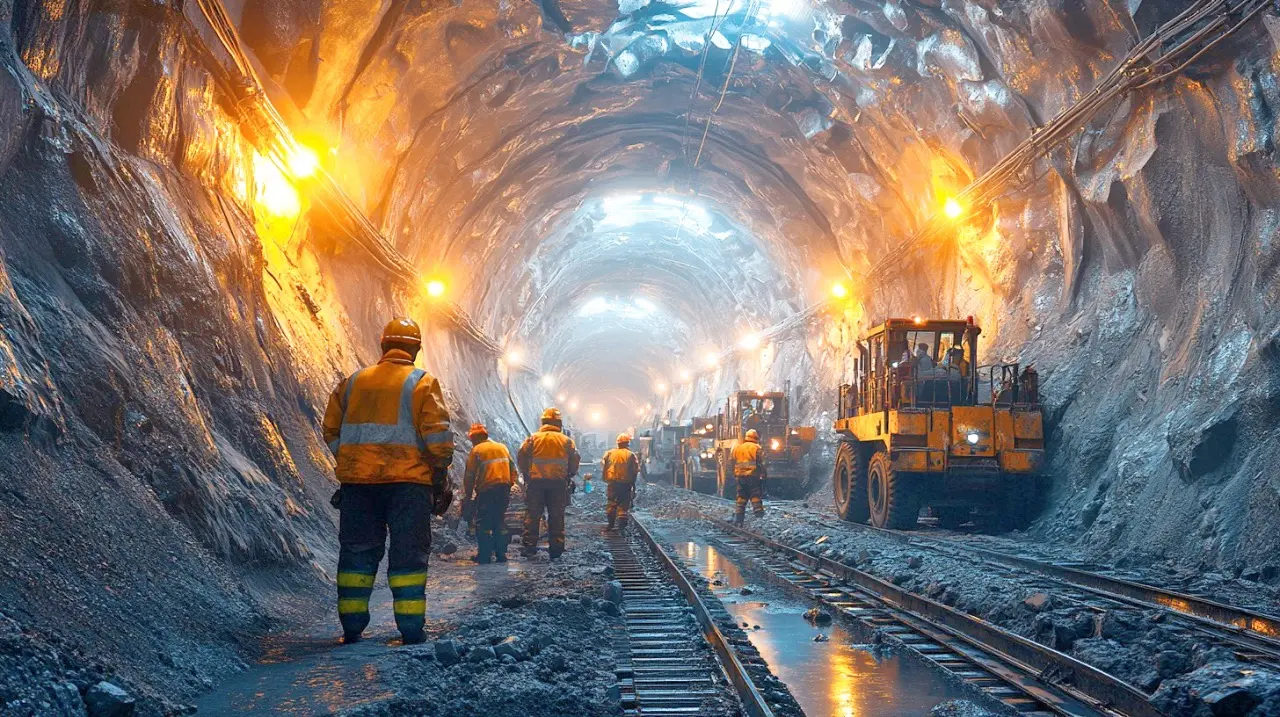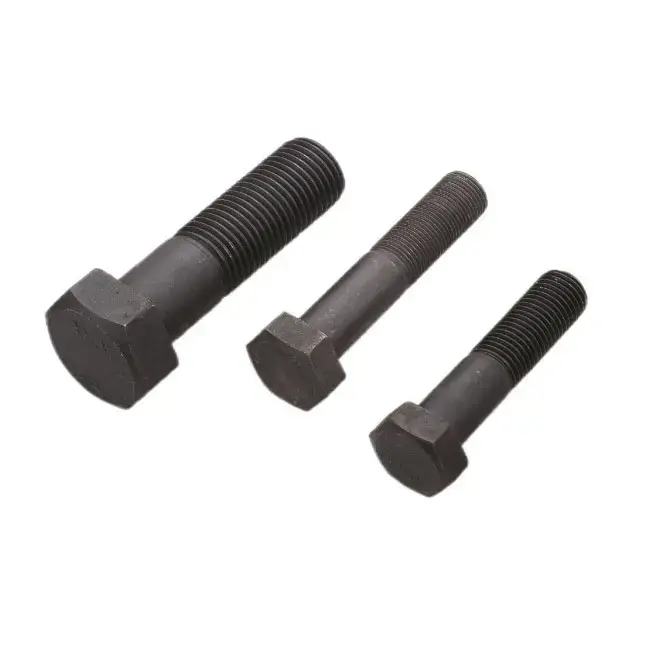Industrial Fasteners Market Insights and Future Growth Analysis
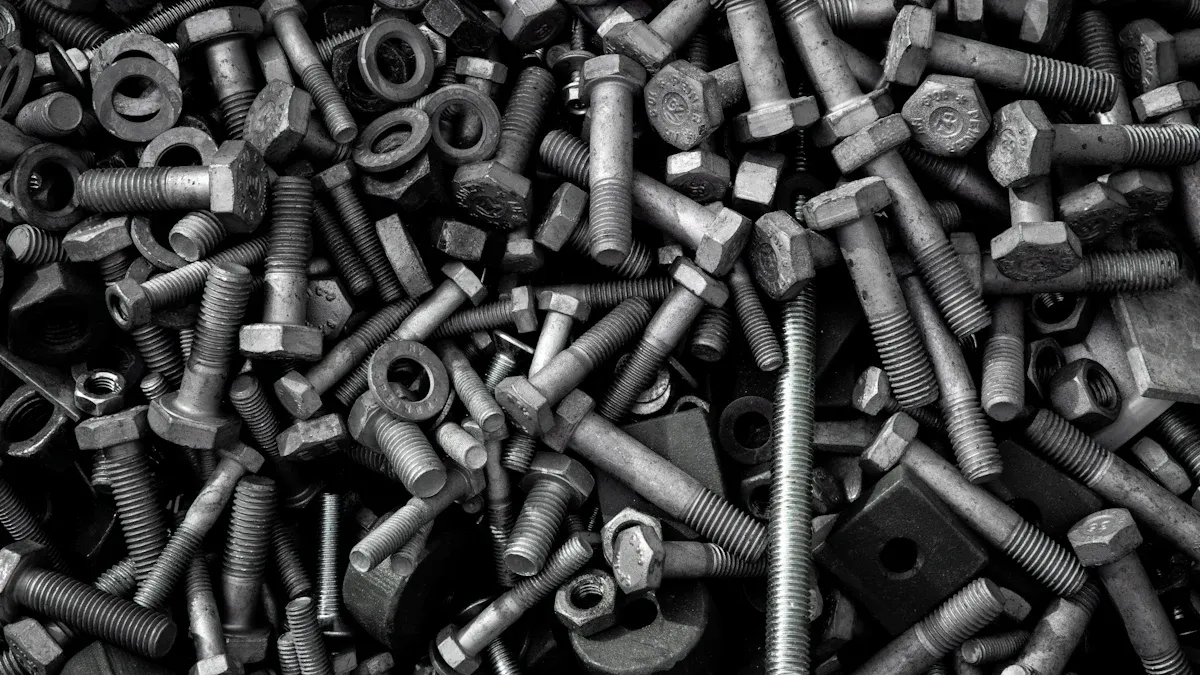
The industrial fasteners market continues to expand, driven by advancements in manufacturing and rising demand across pivotal industries. Asia Pacific’s robust manufacturing network is projected to push regional valuation to USD 67.21 billion by 2037. Vehicle production, which reached 80 million units in 2021, underscores the growing demand for automated Mining Equipment (customized fasteners) and other specialized solutions.
Key Takeaways
- The industrial fasteners market may grow to USD 146.10 billion by 2032. This growth is due to better manufacturing and more demand in big industries.
- New technologies, like smart fasteners that track performance, help work faster and support eco-friendly goals. These fasteners are important for today's industrial needs.
- Using special fasteners for mining machines can help companies compete better. This is because people want tools that last longer and work well.
Market Overview
Current Market Size and Valuation
The industrial fasteners market has demonstrated steady growth in recent years, with significant valuation milestones.
- By 2025, the market is expected to reach USD 103.99 billion.
- Revenue projections for 2030 estimate a valuation of USD 131.45 billion.
- Analysts predict a compound annual growth rate (CAGR) of 4.8% between 2025 and 2030.
This growth reflects the increasing demand for fasteners across industries such as automotive, construction, and aerospace. The market's ability to adapt to evolving industrial needs, including the production of high-strength and sustainable fasteners, has further solidified its position as a critical component of global manufacturing.
Growth Forecast Through 2032
The industrial fasteners market is poised for robust expansion through 2032. The following table highlights key growth projections:
| Year | Market Size (USD Billion) | CAGR (%) |
|---|---|---|
| 2024 | 97.62 | 4.40 |
| 2032 | 146.10 | 4.8 |
| 2034 | 146.83 | N/A |
The consistent CAGR of 4.8% from 2025 to 2032 underscores the market's resilience and adaptability. This growth trajectory is fueled by advancements in manufacturing technologies and the rising adoption of automated solutions in industrial applications.
Role of Fasteners in Mining and Industrial Applications
Fasteners play a pivotal role in ensuring the structural integrity and operational efficiency of mining and industrial equipment. In mining, customized fasteners are essential for automated machinery, which operates under extreme conditions. The construction sector, as the largest consumer of fasteners, relies on these components for infrastructure development and repair projects. Additionally, the aerospace industry has seen a surge in demand for high-strength specialty fasteners, driven by the production of lightweight aircraft.
Note: The versatility and durability of industrial fasteners make them indispensable across diverse applications, ensuring their continued relevance in a rapidly evolving industrial landscape.
Key Market Drivers and Trends
Growing Demand for Automated Mining Equipment (Customized Fasteners)
The mining industry has witnessed a significant shift toward automation, driven by the need for efficiency and safety in operations. Automated mining equipment relies heavily on customized fasteners designed to withstand extreme conditions such as high pressure, temperature fluctuations, and corrosive environments. These fasteners ensure the durability and reliability of machinery, reducing downtime and maintenance costs.
The growing demand for automated mining equipment (customized fasteners) is particularly evident in regions like Asia-Pacific, where mining activities are expanding rapidly. Manufacturers are focusing on developing fasteners with enhanced strength and precision to meet the specific requirements of automated systems. This trend aligns with the broader push for industrial automation, which is transforming traditional mining practices into more sustainable and efficient operations.
Tip: Investing in the development of high-performance fasteners tailored for automated equipment can provide manufacturers with a competitive edge in the evolving mining sector.
Technological Advancements in Smart and Sustainable Fasteners
Technological innovation has revolutionized the industrial fasteners market, with a growing emphasis on smart and sustainable solutions. Smart fasteners equipped with sensors and real-time monitoring capabilities are gaining traction across industries. These advanced fasteners enable predictive maintenance, reducing operational disruptions and enhancing safety.
The following table highlights key advancements in smart and sustainable fastener technologies:
| Indicator Type | Description |
|---|---|
| Real-time joint health monitoring | Enables condition-based maintenance, optimizing resources and improving safety. |
| Failure prediction algorithms | Analyzes fastener data patterns to forecast issues, minimizing downtime. |
| Digital twin integration | Enhances simulation accuracy for maintenance planning through virtual models. |
| Maintenance automation | Streamlines inspection and repair processes using fastener data. |
| Bio-based polymers | Replaces petroleum-based plastics, reducing environmental impact. |
| Recycled content alloys | Allows high percentages of recycled material in critical applications. |
| Carbon footprint optimization | Guides material choices through lifecycle assessments. |
| Reversible fastening systems | Enables non-destructive disassembly for reuse or recycling. |
| Material identification features | Facilitates automated sorting during recycling processes. |
| Mono-material approaches | Simplifies separation and recycling by reducing material types. |
| Energy-efficient manufacturing | Minimizes carbon emissions during production. |
| Localized production networks | Reduces transportation emissions by manufacturing closer to use points. |
| Renewable energy adoption | Many manufacturers are committing to 100% renewable electricity. |
| Carbon offset programs | Invests in projects that remove or prevent carbon emissions. |
These advancements not only improve operational efficiency but also align with global sustainability goals. For instance, the adoption of bio-based polymers and recycled content alloys significantly reduces the environmental impact of fastener production. Additionally, reversible fastening systems and mono-material approaches simplify recycling processes, promoting a circular economy.
Rising Demand in Automotive, Construction, and Mining Industries
The automotive, construction, and mining industries collectively drive a substantial portion of the industrial fasteners market. The automotive sector, in particular, accounts for 25% of the market share, generating $21.6 billion in revenue. This demand stems from the increasing production of vehicles, which require a wide range of fasteners for assembly and maintenance.
In the construction industry, fasteners play a critical role in infrastructure development, including bridges, buildings, and roads. The sector's reliance on durable and high-strength fasteners ensures the structural integrity of projects. Meanwhile, the mining industry continues to demand customized fasteners for automated equipment, further emphasizing their importance in industrial applications.
- Asia-Pacific leads the market with a 37.1% share, driven by manufacturing growth in India and China.
- The metal segment dominates the market, accounting for 57% of the share due to its durability and reusability.
The rising demand for automated mining equipment (customized fasteners) and the increasing focus on sustainability are expected to further boost the adoption of advanced fasteners across these industries. Manufacturers must continue to innovate to meet the evolving needs of these critical sectors.
Market Segmentation Analysis
By Product Type
The industrial fasteners market is segmented into threaded and non-threaded fasteners. Threaded fasteners, including bolts, screws, and studs, dominate the market due to their versatility and strength. These products are widely used in automotive, construction, and aerospace applications. Non-threaded fasteners, such as rivets and pins, are essential for applications requiring permanent assembly or high shear strength.
Externally threaded fasteners, such as bolts and screws, represent the most widely used product type. Their ability to provide secure and adjustable connections makes them indispensable across industries. Aerospace-grade fasteners, designed for extreme conditions, are also gaining traction, particularly in the aviation and defense sectors.
By Material Type
Fasteners are manufactured using a variety of materials, including stainless steel, aluminum, plastic, and superalloys. Metal fasteners account for 91.2% of the market share as of 2024, with stainless steel being the most commonly used material due to its Corrosion Resistance and durability. Aluminum fasteners are preferred in lightweight applications, such as automotive and aerospace, while superalloys are utilized in high-temperature environments.
Plastic fasteners are experiencing rapid growth, particularly in the automotive sector. Their lightweight nature and resistance to corrosion make them ideal for interior trim and non-structural components. The increasing adoption of bio-based and recycled materials further highlights the industry's shift toward sustainability.
By Industry Applications
The automotive sector holds the largest market share, followed by aerospace and construction. Fasteners are critical in automotive applications, including engines, chassis, and transmission systems. In aerospace, high-strength fasteners ensure the structural integrity of aircraft under extreme conditions. The construction industry relies on durable fasteners for infrastructure projects, such as bridges and buildings.
| Category | Subcategories |
|---|---|
| Product Type | Threaded Fastener, Non-Threaded Fastener |
| Material Type | Stainless Steel, Plastic, Aluminum, Iron, Bronze, Brass, Nickel |
| Industry Application | Engine, Chassis, Interior Trim, Front/Rear Axle, Steering, Transmission, Other |
The growing demand for advanced materials and customized fasteners across these applications underscores the market's dynamic nature.
Regional Insights

North America
North America remains a key player in the industrial fasteners market, driven by its advanced manufacturing sector and strong demand from the automotive and aerospace industries. The United States leads the region, with significant investments in infrastructure projects and defense manufacturing. Canada contributes through its growing construction sector, which relies heavily on durable and high-strength fasteners.
The region's focus on innovation has spurred the adoption of smart fasteners equipped with real-time monitoring capabilities. These advancements align with the increasing demand for predictive maintenance solutions in industrial applications. Additionally, the shift toward sustainable manufacturing practices has encouraged the use of recycled materials in fastener production, further boosting market growth.
Europe
Europe's industrial fasteners market demonstrates steady growth, supported by its robust automotive and aerospace industries. The region's emphasis on sustainability has driven the adoption of bio-based and recyclable materials in fastener manufacturing. Germany, France, and the United Kingdom lead the market, with significant contributions from their advanced engineering sectors.
| Metric | Description |
|---|---|
| Sales Growth Analysis | Reviews the fastest growing and shrinking companies in the market. |
| Profit Analysis | Analyzes gross and pre-tax profit over the last decade. |
| Market Size | Compares last year's market size with the current figure based on 478 companies. |
| Rankings | Ranks the top 50 companies by market share, sales growth, gross profit, and pre-tax profit. |
The table above highlights key performance metrics that underscore Europe's competitive landscape. These insights reflect the region's commitment to innovation and market leadership.
Asia-Pacific
Asia-Pacific dominates the global industrial fasteners market, fueled by rapid industrialization and robust economic growth. The region is projected to reach a market size of USD 63.38 billion by 2030, with a compound annual growth rate (CAGR) of 6%.
- Revenue forecast for 2025 is USD 46.9 billion, with a growth rate of 6.3% from 2025 to 2030.
- Increasing construction activities and rising disposable incomes drive demand.
- The region's emergence as a global automotive hub further boosts the market.
China and India lead the region, leveraging their strong manufacturing bases and expanding infrastructure projects. Japan contributes through its advanced technology and high-quality fastener production.
Rest of the World
The industrial fasteners market in the rest of the world shows promising growth, with a projected CAGR of 5.74% from 2023 to 2029. Market size is expected to rise from USD 89.43 billion in 2023 to USD 124.98 billion by 2029.
- Countries in the APAC region, such as China, Japan, and India, play a significant role in driving global growth.
- Strong manufacturing activities and increasing investments in infrastructure projects contribute to market expansion.
The Middle East and Africa also exhibit potential, with rising construction activities and industrial development. Latin America, particularly Brazil, sees growth due to its expanding automotive sector and infrastructure investments.
Competitive Landscape
Major Players and Market Share
The industrial fasteners market is dominated by key players such as Stanley Black & Decker, Hilti Corporation, and Illinois Tool Works Inc. These companies hold significant market shares due to their extensive product portfolios and global distribution networks. Stanley Black & Decker, for instance, has leveraged its strong brand reputation to maintain a competitive edge in both developed and emerging markets. Hilti Corporation continues to lead in the construction sector, offering innovative fastening solutions tailored to infrastructure projects. Illinois Tool Works Inc. has capitalized on its advanced manufacturing capabilities to cater to the automotive and aerospace industries.
Recent Developments and Innovations
Mergers and acquisitions have become a prominent trend among major competitors, enabling them to expand their market presence and diversify product offerings. For example, GMS Inc. acquired Tanner Bolt and Nut Inc. in January 2023. This acquisition strengthened GMS Inc.'s market reach, improved service capabilities, and broadened its product portfolio.
| Company Acquiring | Company Acquired | Date | Impact on Market Presence |
|---|---|---|---|
| GMS Inc. | Tanner Bolt and Nut Inc. | January 2023 | Strengthens reach, improves service, broadens product offerings |
Such strategic moves highlight the industry's focus on consolidation and innovation to meet evolving customer demands.
Strategies for Market Competitiveness
Leading companies employ several strategies to maintain their competitive positions. Investment in research and development remains a priority, enabling the creation of high-performance fasteners for specialized applications. Many firms are also adopting sustainable manufacturing practices, such as using recycled materials and energy-efficient production methods. Additionally, partnerships with regional distributors help companies enhance their supply chain efficiency and penetrate untapped markets.
Insight: Companies that prioritize innovation and sustainability are better positioned to thrive in the competitive industrial fasteners market.
Future Growth Prospects

Emerging Applications in Advanced Industries
The industrial fasteners market is witnessing a surge in demand from advanced industries such as aerospace, renewable energy, and electronics. These sectors require specialized fasteners designed to meet stringent performance standards. For instance, the aerospace industry increasingly relies on lightweight, high-strength fasteners to enhance fuel efficiency and structural integrity. Similarly, the renewable energy sector demands corrosion-resistant fasteners for wind turbines and solar panel installations, ensuring durability in harsh environmental conditions.
In the electronics industry, miniaturized fasteners are gaining traction due to the growing trend of compact and lightweight devices. These fasteners provide secure connections without compromising the functionality of intricate components. The automotive sector also continues to innovate, with hybrid fasteners becoming a preferred choice for electric vehicles. These fasteners combine the benefits of multiple materials, offering enhanced strength and reduced weight.
Insight: The diversification of fastener applications across advanced industries highlights the market's adaptability and potential for sustained growth.
Role of Automation and Smart Technologies
Automation and smart technologies are revolutionizing the industrial fasteners market, driving efficiency and innovation. Industry 4.0 has introduced smart manufacturing lines that integrate robotics, real-time analytics, and predictive maintenance. These advancements optimize production processes, reduce waste, and ensure consistent product quality.
Key impacts of automation and digitalization include:
- Robotics and real-time analytics enhance production efficiency and minimize scrap rates.
- Embedded sensors in fastening tools enable predictive maintenance, reducing operational disruptions.
- Smart fasteners with real-time joint health monitoring improve safety and reliability.
The growing demand for automated mining equipment (customized fasteners) exemplifies this trend. These fasteners are engineered to withstand extreme conditions while ensuring the seamless operation of automated machinery. Manufacturers are increasingly adopting smart technologies to cater to the specific needs of industries like mining, where efficiency and durability are paramount.
Tip: Companies investing in automation and smart technologies can achieve a competitive edge by delivering high-performance, customized solutions.
Projected Growth Rates Through 2032
The industrial fasteners market is projected to grow steadily through 2032, driven by advancements in technology and expanding applications across industries. Several factors influence these growth predictions:
| Factor | Influence on Market Growth |
|---|---|
| Growth in building and construction industry | Drives market growth due to increased demand |
| Rising demand for hybrid fasteners | Contributes positively to market expansion |
| Emergence of alternatives | Acts as a restraint on market growth |
| Increasing demand from aerospace industry | Provides opportunities for market growth |
| Technological advancements | Enhances product quality and market competitiveness |
| Regional economic conditions | Influences overall market dynamics |
| Industrial activities | Boosts demand for fasteners in various applications |
The market's growth trajectory is further supported by global infrastructure projects, ongoing innovation in automotive and aerospace industries, and the trend toward automation. For example, the Asia-Pacific region is expected to maintain a compound annual growth rate (CAGR) of 6%, fueled by rapid industrialization and infrastructure development. Similarly, North America and Europe continue to invest in sustainable manufacturing practices, contributing to market expansion.
The growing demand for automated mining equipment (customized fasteners) remains a significant driver, particularly in regions with robust mining activities. This demand underscores the importance of innovation in meeting the evolving needs of industrial applications.
Forecast: By 2032, the industrial fasteners market is expected to reach a valuation of USD 146.10 billion, reflecting its resilience and adaptability in a dynamic global landscape.
The industrial fasteners market demonstrates remarkable growth potential, fueled by technological advancements and increasing demand across industries.
- North America’s market is projected to grow at a CAGR of 5.5% through 2030, with the automotive segment leading at 6.6%.
- The market size, valued at USD 16,306 million in 2022, is expected to reach USD 24,971 million by 2030.
| Segment/Region | 2024 Value (USD) | Projected Growth (USD) | CAGR |
|---|---|---|---|
| Aerospace Grade Fasteners | N/A | N/A | Fastest |
| Automotive Segment | Largest Share | N/A | N/A |
| Asia Pacific Region | 31.76 Billion | 32.57 Billion (2025) | N/A |
| North America | 25.03 Billion | 34.56 Billion (2032) | N/A |
Innovation and regional opportunities will shape the market’s future. Stakeholders should explore investment opportunities in this dynamic sector to capitalize on its evolving trends.
Weiye Corp.: Connecting the Future of Global Industry with Excellence
In the global industrial sector, fasteners may be small, but they are critical components ensuring equipment safety and performance. As a specialized manufacturer and exporter of industrial fasteners, Weiye Corp. is committed to providing high-strength, corrosion-resistant, and long-lasting fastening solutions for key industries such as power generation, construction, mining, and automotive. Our products are exported to 30+ countries and regions worldwide, making us a trusted partner in the international industrial supply chain.
Innovation-Driven to Meet Industry Challenges
As global industries shift toward smart and green transformation, fastener technology demands higher standards in materials, precision, and environmental adaptability. Weiye Corp. stays ahead of trends by integrating automated production lines and digital quality inspection systems, ensuring compliance with ISO, DIN, ANSI, and other international standards. We also develop special alloy coatings and anti-loosening designs to meet the demands of extreme environments (such as offshore wind power, deep mining, and new energy vehicles), helping customers reduce maintenance costs and enhance equipment reliability.
Industry-Specific, Customized Solutions
We understand the unique requirements of different sectors:
Power & Energy: High-temperature and high-pressure bolts for safe power plant and transmission infrastructure.
Construction & Infrastructure: Seismic-resistant and rust-proof structural fasteners for skyscrapers and bridges.
Mining Machinery: Ultra-wear-resistant fastening systems for heavy-load impact conditions.
Automotive Manufacturing: Lightweight precision screws for evolving new energy vehicle technologies.
Weiye Corp. offers end-to-end services—from material selection and design to logistics—ensuring flexible and responsive support.
Global Reach, Local Support
With a worldwide distribution network and decades of export experience, we ensure fast delivery to key markets, including Europe, North America, and Southeast Asia. Our multilingual technical team provides pre-sales consultation and after-sales support, eliminating customer concerns.
FAQ
What are industrial fasteners used for?
Industrial fasteners secure components in construction, automotive, aerospace, and mining applications. They ensure structural integrity and operational efficiency across diverse industries.
How do smart fasteners improve efficiency?
Smart fasteners monitor joint health, predict failures, and enable automated maintenance. These features reduce downtime and enhance safety in industrial operations.
Which materials dominate the fasteners market?
Metal fasteners, especially stainless steel, lead the market. Their durability, corrosion resistance, and reusability make them ideal for automotive, aerospace, and construction applications.


